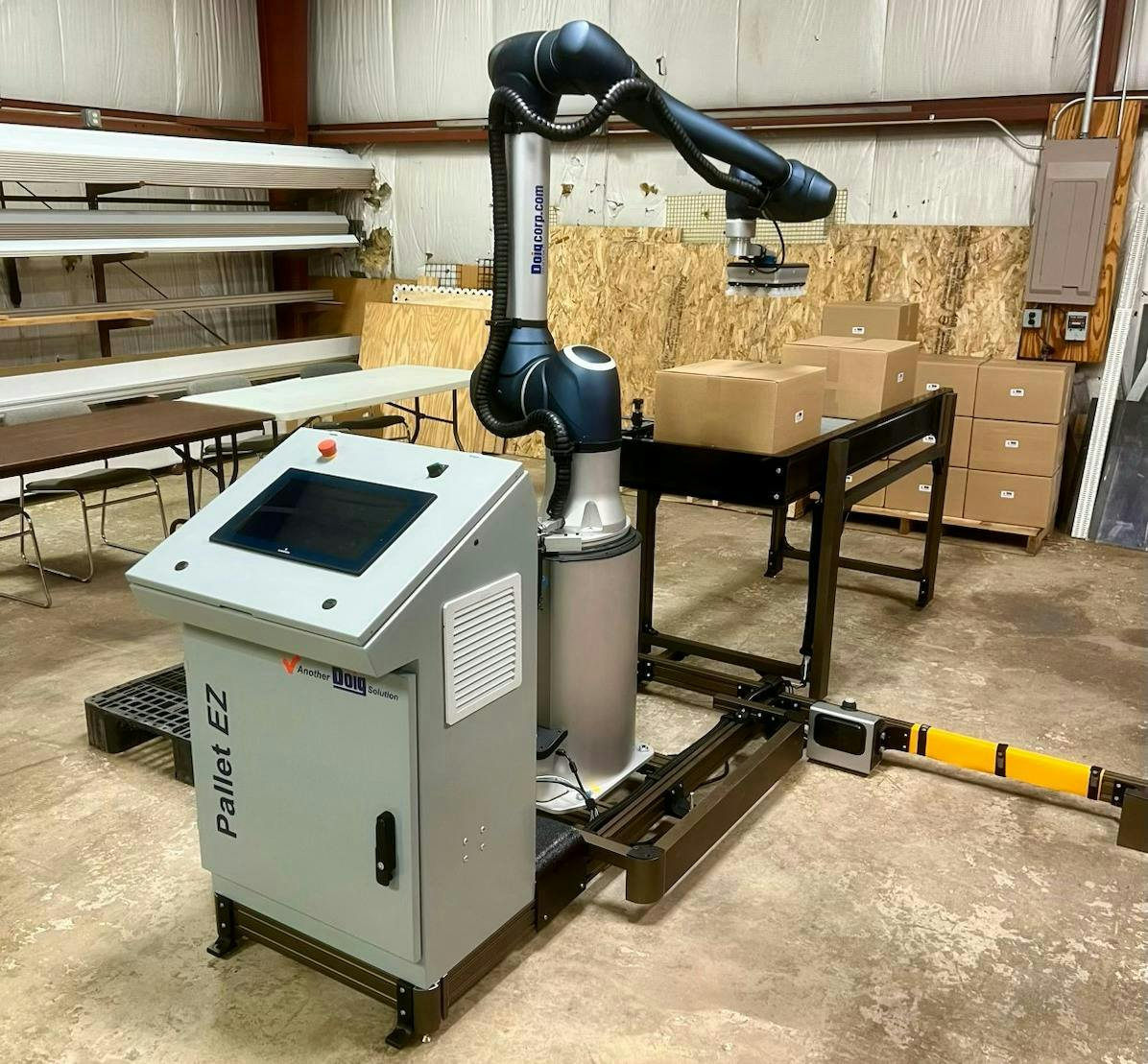Key highlights:
- Predictive modeling and real-time optimization can address process variability and enhance control in energy-intensive equipment like industrial dryers.
- Modular automation technologies, such as cobots and autonomous mobile robots (AMRs), enable scalable, flexible automation in manufacturing operations.
- Advanced robotics and AI are expanding automation into mobile and nontraditional industrial environments.
Industry continues to push the automation envelope, and technologies like artificial intelligence, machine vision and robotics are pushing the boundaries further. Machine builders Andritz, Doig and Comau provide three examples of innovative uses of automation that are moving operations toward autonomy.
Someday we will have fully autonomous, what some have referred to as lights-out, manufacturing or dark factories, but for now operators still rule the factory floor, and they will in some capacity for a long time.
In some industries, automation is second nature, and they’re much further on the journey to autonomous operations, but many industries are still adopting automation machine by machine.
Andritz optimizes dryer control for better product and lower power consumption
Manufacturers have adopted machines to automate their processes in probably every industry, especially discrete manufacturing. “The challenge now lies in continuous processes and how to integrate all of the automated machines together to create a truly autonomous operation,” says Sohail Nazari, global vice president and head of automation and digitalization for Andritz feed and biofuel, part of the company’s environment and energy group. The company has set 2027 as a goal for autonomous operations for its feed and biofuel customers. Nazari has worked in Andritz’s pulp and paper and mining and mineral processing divisions, to enable more autonomous operations in those industries and will apply the lessons learned to an industry with automation opportunity.
“Automating a machine when everything is going well is not a particularly difficult task. The issue arises when inputs or conditions deviate from the norm,” says Nazari. “How can we automatically make decisions that tolerate these conditions without disrupting the process or requiring constant human intervention?”
Nazari uses the example of working with dryers in the pet food and feed industries. “For many years, we’ve used programmable logic controllers (PLCs) to manage the drying process, taking samples from the output to measure moisture and pellet durability index (PDI).” Early on, he says, this level of technology use was considered autonomous.
To learn more about autonomous operations, read this other article about:
- advanced technology hurdles—"5 challenges machine builders face on industry’s journey to autonomy"
“However, it’s not sufficient to handle process changes. The reality is that when a recipe changes or unexpected conditions arise, operators have to step in. Even when they don’t, there's still a high level of variability in the moisture output—due to disturbances in the heating system, inlet moisture levels, raw material differences or environmental factors. This means that, even with PLC control, operations often suffer from inefficiencies,” Nazari says. Even with inline analyzers to measure moisture, they still see high variability because the dryer operation is too complex for the control algorithm.
Andritz has taken autonomous control one step further with its technology called model predictive control (MPC), which has been used in oil and gas and pulp and paper plants for more than 20 years, Nazari says. Until recently, this technology wasn’t affordable to the feed and biofuel industries, but MPC is now helping to reduce moisture variability in the drying process, cut power consumption and increase moisture levels in the final product.
“MPC is a fundamentally different type of controller. It first builds a model of the dryer’s behavior, a digital twin of the dryer, and then uses that model to predict and optimize performance in real time, even under uncertain or changing conditions,” Nazari says. Specifically for feed and pet food manufacturers Andritz Dryer ACE (Advanced Control Expert) will automate the drying process and can dramatically improve product quality.
Andritz’s results show a moisture variability reduction of up to 60% and increased moisture levels in the final product by up to 2% on average, says Nazari. Dryers can use up to 50% of a plant’s energy, and the system reduces power consumption by 15%, and operators no longer need to monitor product quality or content, says Nazari.
Doig uses robots and AMRs to automate palletizing operation
Collaborative robots (cobots) are stepping in to do logistics and warehousing work in many operations, moving or stacking material or pick-and-place packing applications. Automation distributor and manufacturer Doig offers a cobot palletizing setup, Pallet EZ, using a collaborative robot to handle and stack goods on pallets (Figure 1). It uses OnRobot’s D:PLOY application-based software, a no-code platform that automates programming and adapts to various pallet patterns and product sizes.
With a cobot palletizing system, end users can begin with a single rapid-deployment palletizing station and expand as demand grows, adding more palletizing units, then scaling upstream by integrating automated case packing and carton forming with additional cobots or industrial robots.
“Downstream, autonomous mobile robots can be incorporated for pallet handling, seamlessly transporting finished pallets between stations or to shipping zones,” says Eric Kraus, director of sale and automation, Doig. “This modular approach, driven by technologies including simplified, intuitive software systems, cobots and AMRs, has surged in adoption recently, offering an accessible entry point into automation, particularly in smaller businesses where automation has been hard to adopt due to expertise or capital constraints.”
Get your subscription to Control Design’s daily newsletter.
Comau manufactures mobile welding robots and temporary factories for solar farm assembly
Comau is working with customers in manufacturing and beyond to automate traditional and more complex emerging processes, increasingly deploying robotics and artificial intelligence for more autonomy, says Alessandro Piscioneri, head of products and solutions management at Comau. Automation has evolved, he says, from fixed production lines to flexible systems that handle complex, unstructured tasks. “The adoption of mobile and collaborative robotics has increased over the past five years, which has allowed us to reach new industries such as aerospace, shipbuilding and renewable energy,” Piscioneri says. “Comau is increasingly deploying advanced automation within manufacturing environments but also outside the traditional factory setting.”
One example is MR4Weld (Figure 2), an outdoor automation product, designed in collaboration with Fincantieri, a shipbuilder. “MR4Weld is essentially a mobile robot that can autonomously weld up to 170 m of steel in a single shift, while working side-by-side with operators in complete safety,” Piscioneri says. With a flexible design, MR4Weld can be adapted to a variety of applications, such as the production of large steel infrastructure projects, continuous structures for suspension bridges and large hoisting systems.
Comau also developed Hyperflex (Figure 3), a temporary factory for solar farm assembly. It reduces multiple steps into a highly automated workflow. “The Comau-designed rover autonomously manages the manufacturing, transportation and installation of the torque tube, transversal beam and photovoltaic (PV) module in a single, streamlined operation,” he adds. Hyperflex was designed originally to work with EDP Renewables, an energy provider based in Madrid, Spain, with a portfolio of solar projects. The system can be tailored to handle different types and sizes of solar blades or even for other types of large-scale, outdoor assembly projects.
Next steps for controls engineers:
- Research and evaluate the feasibility of implementing advanced control algorithms in current or upcoming projects to optimize process performance.
- Explore modular automation products, such as cobots and AMRs, that can be incrementally deployed to improve flexibility and scalability in manufacturing operations.
About the Author
Anna Townshend
Managing Editor
Anna Townshend has been a writer and journalist for 20 years. Previously, she was the editor of Marina Dock Age and International Dredging Review, until she joined Endeavor Business Media in June 2020. She is the managing editor of Control Design and Plant Services.

Leaders relevant to this article:




